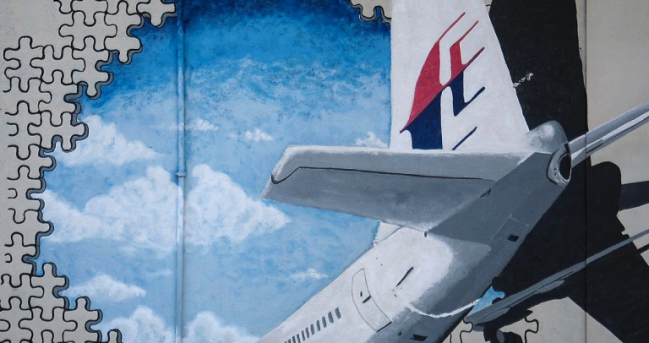
Getty Image
- The whereabouts of the 239 passengers or crew on board missing Malaysia Airlines Flight MH370 are still a complete mystery over seven years later.
- Richard Godfrey of the MH370 Independent Group believes that new technology may have uncovered some new clues about where MH370 went when it disappeared.
- More Malaysia Airlines Flight 370 news here.
It has now been, as of Monday, 2,806 days since the mysterious disappearance of Malaysia Airlines Flight 370. That’s over seven and a half years, and still we have no real answers for happened to the Boeing 777 aircraft or the 239 missing passengers and crew members that were on board the plane.
There have been an abundance of theories and guesses as to what occurred with Flight MH370 on March 8, 2014, but investigators, both professional and amateur have yet to uncover the solid truth.
One of those amateur investigators, an engineer named Richard Godfrey who is a founding member of the MH370 Independent Group, believes that he has made a significant breakthrough, however.
Utilizing a computer program called Weak Signal Propagation Reporter (WSPR), Godfrey tracked the flight path of MH370 and discovered that it appears as if the plane was put into a holding pattern near the coastline of Sumatra, an Indonesian island, reports the Daily Express.
“WSPR is like a bunch of tripwires or laser beams, but they work in every direction over the horizon to the other side of the globe,” Godfrey explained to AirlineRatings.com.
“What I found out, without looking for it, was that MH370 entered a race track holding pattern at around 19:12 UTC,” Richard Godfrey explained.
“I was surprised to discover that not only did MH370 enter a holding pattern, but that the holding pattern lasted for around 22 minutes.
“On entering the holding pattern MH370 was 150nm [nautical miles] from the coast of Sumatra [Indonesia] and 40nm from the 2nd Arc,” he continued.
“If the pilot’s goal was to make MH370 disappear without a trace, then why waste fuel with a holding pattern and why not head directly to the most remote area possible of the Indian Ocean without deviation?”
It has been widely speculated that the pilot of Flight MH370, Zaharie Ahmad Shah, either deliberately crashed the passenger jet or was the victim of a hijacking. One aviation expert even went so far as to claims Russia had the means and motive to hijack the flight.
One theory even believes that Shah depressurized the plane, knocking everyone out or killing them thanks to hypoxia, lowered the plane to 3,000 feet, then parachuted out of plane to meet his mistress in the water below, sending the plane on a crash course from which it never recovered.
Another claims that Captain Shah was depressed and deliberately crashed Flight MH370 as part of some sort of suicide mission.
None of which explains how the giant plane and over 200 people just vanished without a trace off the face of the Earth.
Related: New Discovery In The Case Of Missing Flight MH370: ‘Secret’ Cargo Weighing Over 4 Metric Tons?

Getty Image
In 2016, Australian officials investigating MH370 confirmed that Shah had taken a flight path that would have taken the Boeing 777 “to the point of fuel exhaustion.”
This theory closely matches Godfrey’s WSPR flight simulation.
“The analysis by Victor Iannello and Yves Guillaume of the flight simulator data found on Zaharie Shah’s extensive home flight computer set up is a smoking gun,” said Godfrey.
“Zaharie Shah simulated a single flight from Kuala Lumpur via the Malacca Strait [next to the Indonesian island of Sumatra] to the point of fuel exhaustion in the southern Indian Ocean.”
However, the Australian Transport Safety Bureau (ATSB) disputed the importance of Shah’s flight simulator data, saying, “The simulator information shows only the possibility of planning. It does not reveal what happened on the night of its disappearance nor where the aircraft is located.”
In a previous investigative report, Richard Godfrey stated that his data shows the pilot Shah deliberately changed the direction and speed of the plane’s flight path to avoid giving a clear idea where he was headed.
“The level of detail in the planning implies a mindset that would want to see this complex plan properly executed through to the end,” said Godfrey.
Related: Chief Engineer At EgyptAir Shares His Incredible Theories About The Disappearance Of Flight MH370
So far, over 50,000 square miles has been thoroughly searched and only 33 pieces of debris from missing Flight MH370 have been discovered. The whereabouts of the 239 passengers or crew are still a complete mystery.